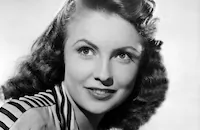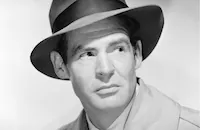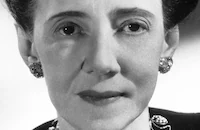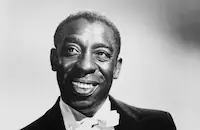The Sky's the Limit

Brief Synopsis
Cast & Crew
Edward H. Griffith
Fred Astaire
Joan Leslie
Robert Benchley
Robert Ryan
Elizabeth Patterson
Film Details
Technical Specs

Synopsis
Upon completing another successful mission, Flying Tigers Fred Atwell, Richard Merlin and Reginald Fenton are given a hero's welcome and a ten-day leave. The three pilots are then sent cross-country on a personal appearance tour, but when Fred tires of the acclaim and attention, he jumps off the train in a small western town, dons a cowboy hat and boots and hitches a ride to New York City. At the Colonial Club, Fred becomes infatuated by nightclub photographer Joan Manyon. Bored with snapping celebrity photographs, Joan begs her boss, magazine publisher Phil Harriman, for a war-related assignment. To get Joan's attention, Fred pops into her shots and then follows her to a diner after she finishes work. Reluctant to discuss his feats, Fred introduces himself as Fred Burton and receives a lecture from Joan about the seriousness of the war. After following Joan home, Fred rents a room in her apartment building, and the next morning, she awakens to find Fred cooking breakfast in her kitchen. Joan delivers another lecture to Fred about his lack of commitment, and then leaves for work. There Fred visits her later that afternoon, and Joan agrees to join him for dinner if he will talk to Harriman about a job the next day. That night, Joan insists upon going to work at the Canteen, where she and Fred are drafted to fill in for a dancing act. After completing his performance, Fred sees Reg and Richard at the Canteen and begs them to keep his identity secret. The next morning, Reg visits Fred at his apartment with orders to report to duty in two days. After Reg leaves, Fred goes to keep his appointment with Harriman and, after admitting that he is not interested in a job, begins to question the publisher about his intentions toward Joan. When Harriman discloses that Joan has refused his marriage proposal, Fred offers him advice about how to woo her and suggests that Harriman invite her to a romantic dinner at his apartment that night. Following Fred's advice, Harriman invites Joan to dinner, but when he realizes that she has fallen in love with Fred, he tells her that Fred is waiting for her at the apartment. That night, Joan proposes marriage to a surprised Fred and insists upon introducing him to Harvey J. Sloane, the founder of Sloane Aircraft, so that he can ask for a job. The night before Fred is to rejoin his squadron, he accompanies Joan to a banquet honoring Sloane. When Fred insults Sloane about the performance of his aircraft, Sloane tells Joan, who angrily walks out on Fred. Harriman then invites Fred to join him at his favorite bar, where he discloses that he knows Fred's true identity. Fred confides that although he loves Joan, he is unable to make a commitment to her because of the risky nature of his calling. After Harriman leaves, Fred continues drinking and destroys the bar in an angry dance. The next morning, Harriman commiserates with Joan over Fred and assigns her to photograph a squadron of American bombers flying to Australia on a mission. Joan hurries to the airport, where she sees Fred in uniform, readying to board his plane. After the two embrace, Fred promises to come back to her and proclaims his love.

Director
Edward H. Griffith
Cast

Fred Astaire

Joan Leslie

Robert Benchley

Robert Ryan

Elizabeth Patterson

Marjorie Gateson
Freddie Slack
Richard Davies

Clarence Kolb

Eric Blore
Henri Desoto
Dorothy Kelly
Norma Drury
Jerry Mandy

Clarence Muse
Ida Shoemaker
Paul Hurst
Amelita Ward
Joseph Kim
Rhoda Reese
Rube Schaffer
Darby Jones
Vic Potel
Charles Williams
Al Hill
Robert Andersen
Buck Bucko
Roy Bucko
Clint Sharp

Neil Hamilton

Peter Lawford
Frank Melton
Dick Rush
Edna Harris
Jack Carr
Georgia Caine
Ferris Taylor
Al Murphy
Joe Bernard
Ed Mcnamara
Russell Hoyt
Rita Maritt
Ann Summers
Crew
Harold Arlen
Fred Astaire
Claude Carpenter
Carroll Clark
Albert S. D'agostino
Frank Fenton
Roland Gross
Leigh Harline
David Hempstead
Johnny Mercer
Russell Metty
Renie
Lynn Root
Ruby Rosenberg
Darrell Silvera
James G. Stewart
Sherman Todd
Richard Van Hessen
Vernon L. Walker

Photo Collections
Videos
Movie Clip




Trailer
Hosted Intro
Film Details
Technical Specs

Award Nominations
Best Score
Best Song
Articles
The Sky's the Limit
In The Sky's the Limit (1943), Astaire gave audiences a different type of character from the one they'd seen before, perhaps in an attempt to distance himself from the earlier films. John Mueller, in his book Astaire Dancing: The Musical Films, calls it "Fred Astaire's dark comedy". In it, he plays a Flying Tigers ace pilot who is "awaiting reassignment, and, in order to avoid war talk, he changes to civilian clothes. Prowling [New York City], he soon encounters an attractive magazine photographer, played by Joan Leslie. He pursues her, but things quickly get out of hand: they fall in love and become engaged when she proposes. Knowing he will soon have to return to the war, Astaire declines, on bitter reflection, that he is unwilling to commit himself to anything permanent, and he breaks off with Leslie. However, there is a reconciliation at the end, Just as he is about to fly back to the war."
Rather than pursue the reluctant girl and marry her, Astaire makes it as clear as he could in a 1940's movie that something else is on his mind and it isn't marriage. The usually sunny Astaire disposition is replaced by cynicism and rage as expressed in the dance number "One for My Baby (and One More for the Road)" (a song that Astaire later called "one of the best pieces of material that was written especially for me") in which he proceeds to get drunk and then smashes up the bar in his anger at both having fallen in love with Leslie and at the war itself. Ironically, when the film premiered, RKO received a letter from the owner of a theater in San Francisco asking for the scene to be cut on the grounds that it was "unpatriotic" to waste all that glass during wartime, a sentiment that was shared by several members of the preview audience. As Mueller writes, "As it happened, real glass was used in the scene, though, as much for economy as for patriotism, RKO purchased factory rejects for the occasion. Ironically, in peacetime, breakaway glass made of sugar would have been used, but sugar was rationed in 1943. Astaire cut his shins and ankles doing the number, and the dance was dangerous in other ways as well: the bar was slippery, and the choreography called for Astaire to slide and sway his way along the edge. Two nurses stood by throughout the filming of the number, as well as Astaire's concerned wife." The number took two and a half days to shoot and the prop men needed a half an hour just to reset the glasses for another take.
Co-starring with the forty-four-year-old Astaire was eighteen-year-old Joan Leslie, who had already starred opposite much older men like James Cagney in Yankee Doodle Dandy (1942), Gary Cooper in Sergeant York and Humphrey Bogart in High Sierra (both in 1941). Because she turned eighteen during filming, she was obligated by California law to continue attending the studio school until her birthday, prompting Astaire to remark "Gosh, the older I get, the younger they get."
In The Sky's the Limit Leslie introduced the song "My Shining Hour" although she was dubbed by singer Sally Sweetland, who would dub Leslie in at least seven films, including Yankee Doodle Dandy, Thank Your Lucky Stars (1943) and Rhapsody in Blue (1945).
Audience reaction to The Sky's the Limit was mixed. Preview audiences reacted favorably although some seemed to be confused over whether it was a "war" film or not. Bosley Crowther of the New York Times dismissed the songs as "few and undistinguished: one number My Shining Hour is fair." He did not have kind words for Astaire, writing "Fred Astaire is a very thin fellow, but why emphasize it in a film so thin that daylight shows all around him just daylight and Joan Leslie, that's all" and "Mr. Astaire does one solo which is good but a bit woebegone and the rest of the time he acts foolish and rather looks it in his quick-fitting clothes." Leslie fared no better "Mr. Astaire and Miss Leslie, in two dances, work hard for slight effect. For the simple fact is that Miss Leslie, while a gracious and neatly attractive miss, is not a Ginger Rogers when she tries to make with her feet."
Time and record sales have proved Mr. Crowther wrong on at least one point: the songs from the film, "One for My Baby (and One More For the Road)" and "My Shining Hour" with music by Harold Arlen and lyrics by Johnny Mercer, would become standards. "One for My Baby (and One More For the Road)" would be a big hit for Frank Sinatra in the 1950s and recorded by no less than Billie Holliday, Ella Fitzgerald, Lena Horne, Tony Bennett, and Rosemary Clooney among many others. "My Shining Hour" was not only nominated for an Academy Award but became a number one hit a few months after The Sky's the Limit was released.
Producer: David Hempstead, Sherman Todd
Director: Edward H. Griffith
Screenplay: Frank Fenton, Lynn Root
Cinematography: Russell Metty
Film Editing: Roland Gross
Art Direction: Carroll Clark, Albert S. D'Agostino
Music: Leigh Harline
Cast: Fred Astaire (Fred Atwell), Joan Leslie (Joan Manion), Robert Benchley (Phil Harriman), Robert Ryan (Reginald Fenton), Elizabeth Patterson (Mrs. Fisher), Marjorie Gateson (Canteen Hostess).
BW-90m. Closed captioning.
by Lorraine LoBianco
Sources:
Astaire Dancing: The Musical Films by John Mueller
The Internet Movie Database
Wikipedia.org

The Sky's the Limit
Quotes
Trivia
Bernard Pearce was hired as choreographer but was let go a few weeks before filming.
The character played by Fred Astaire refers to Ginger Rogers and Rita Hayworth, Astaire's former co-stars.
The character played by Joan Leslie refers to James Cagney, Leslie's former co-star.
Astaire's character says he learned to dance at Arthur Murray. Astaire had previously been in a dispute with the dancing school chain over the unauthorized use of his likeness.
Leslie's mouthed words at the fadeout were intended to be indecipherable.
Notes
The working title of this film was Lookout Below. Although pre-production news items in Hollywood Reporter place Marcy McGuire and Ella Mae Morse in the cast, they do not appear in the viewed film. A July 1943 news item from Down Beat notes that Morse performed the song "Harvey the Vitory Garden Man," but it was cut from the released picture. Other news items in Hollywood Reporter yield the following information about the production: Norma Drury, who plays the role of a female riveter, was a famous concert pianist and the widow of director Richard Boleslavski. This was Dorothy Kelly's first part at RKO and the studio expanded her role because of her performance. Producer David Hempstead ordered the restaurant scene changed from a full course meal to Joan munching hamburgers because he feared that a large dinner would alienate an audience suffering from food shortages imposed by the war. RKO rented Paramount's New York street set because it was already tarpaulined for night scenes and RKO did not possess enough canvas, a material in short supply because of the war, to drape its own set. The "My Shining Hour" musical number required an elaborate lighting set-up that outlined each instrument with neon lights. That song was nominated for an Academy Award for Best Song and the score was nominated for Best Score. Sunburst lights were also placed into a section of frosted glass flooring to create special dimming and flashing effects. Background shots were filmed in the San Joaquin Valley of Central California.
A September 1943 Hollywood Reporter news item notes that after the picture was released, writer Rowland Brown sued RKO for $220,000, alleging that the studio based this picture on a story he wrote as a vehicle for Fred Astaire and Ginger Rogers at the request of David Hempstead. The disposition of that suit is not known. The Sky's the Limit was Astaire's first film for RKO following his split with Ginger Rogers in 1939. Modern sources note that Astaire took over direction of the dance sequences after his friend, choreographer Hermes Pan, left RKO for Twentieth Century-Fox. The musical number, "One for My Baby and One More for the Road," in which Astaire angrily destroys a bar, is one of his most famous solo dance numbers and is frequently included in retropsectives of his career. Modern sources also note that in order to acquire the services of Joan Leslie for this picture and John Garfield for The Fallen Sparrow, RKO traded its rights to The Animal Kingdom and Of Human Bondage to Warner Bros.
















